


|

|
|
Products & Services
|
iPhone 3GS NO Backlight RepairiPhone 3GS LCD backlight is couple tiny LEDs. In order to light up these LEDs at the same time, a higher voltage drop is neccessary.When "VCC_MAIN" goes thru circuit components L6, Q3, C201, FL28, and J4 Pin 3 to LCD Panel, U18 Power IC Pin 7 "SW_BOOST" provides a chain of on-off rectangle pulses to Q3. Transistor Q3 will then be turned on and off accordingly. When Q3 is on, energy is charged on L6. When Q3 is off, energy goes thru internal diode which is integrated in Q3 and outputs "LCD_BL_CA" on Pin 6, 7 of Q3. This energy piles up on C201. C201 finally has a enough voltage drop (16V) to light up all LEDs on LCD panel at the same time. Theory on Switching Boost Circuit is shown below. NO light, NO display or dim backlight is caused by the defective of one of the component in the circuit or by defective LCD panel. At the same time, J4 connector Pin 1 has power supply "LCD_BL_CC" thru coil FL27 which is from U18 Pin 6. J4 Pin 3 has the boost voltage "LCD_BL_CA" thru coil FL28. 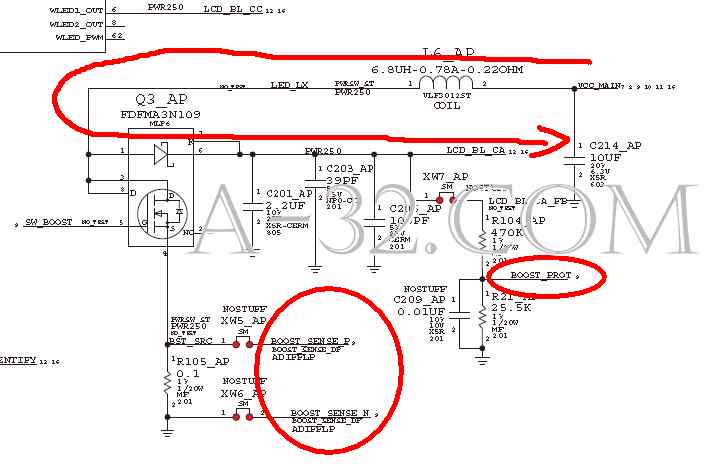 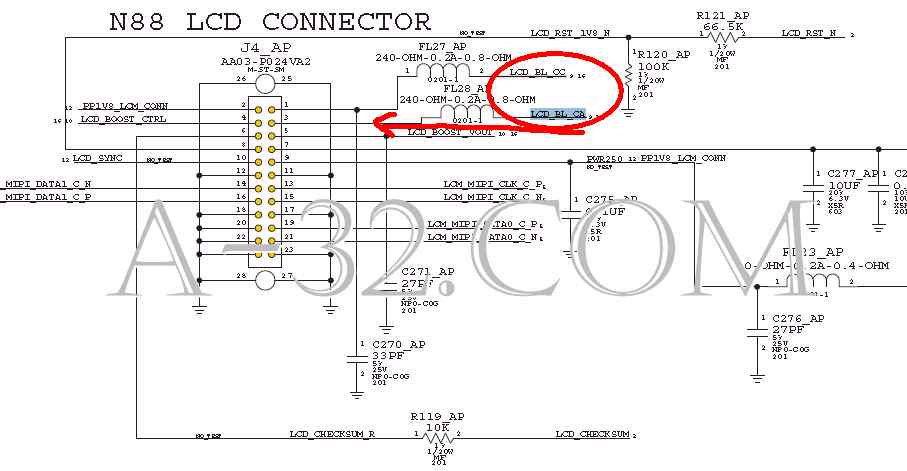 There are 2 protection circuits: 1) R105 senses the current flow on the gate of Q3 . There are 2 signal "BOOST_SENSE_P" and "BOOST_SENSE_N" is connected 2 side of R105 to U18. If an over current occurs, U18 controls the Pin 7 output "SW_BOOST" to make the adjustment. 2) A voltage divider R104 and R21 outputs a signal "BOOST_PROT" which also connects to U18 Pin 54. As boost voltage "LCD_BL_CA" goes over the limit, "BOOST_PROT" goes high and U18 will then make the adjustment on "SW_BOOST". 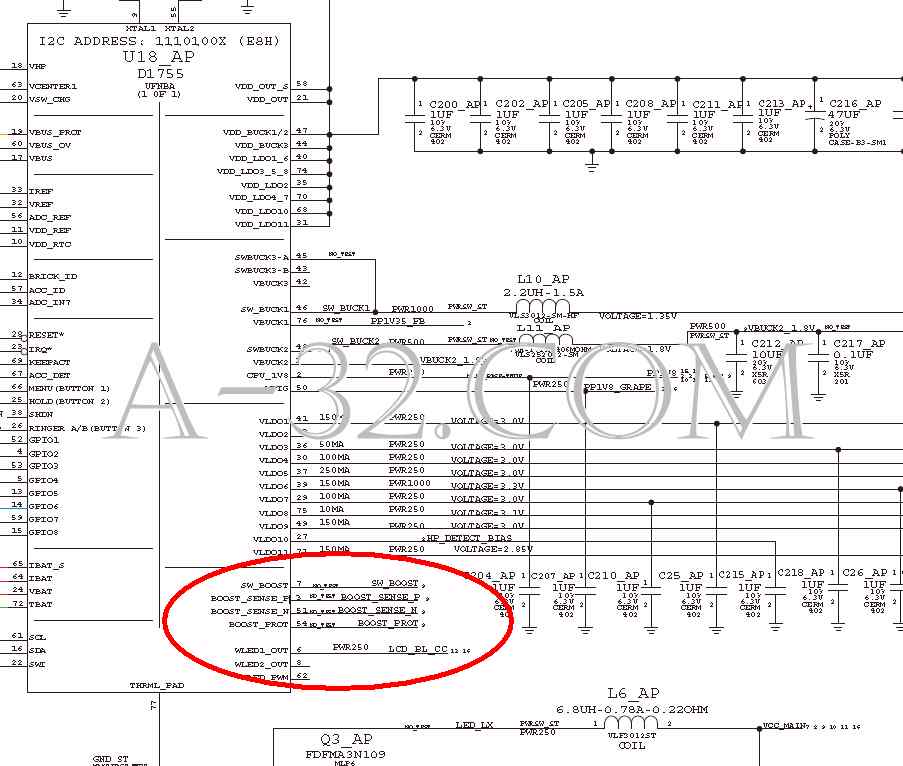 THEORY: 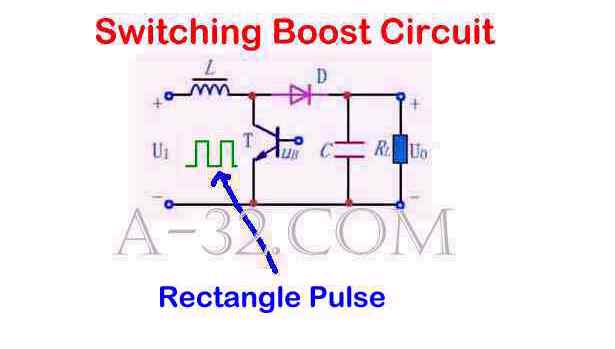 1) Switching Boost Circuit is a DC-DC converter which is by mean of ON-OFF rectangle pulse to pump up the voltage to desired level. Here is the brief illustration of this widely used circuit. As the intial pulse is HIGH, transistor turns ON to allow current go thru coil L. Coil stores eneregy in the form of magnetic field. 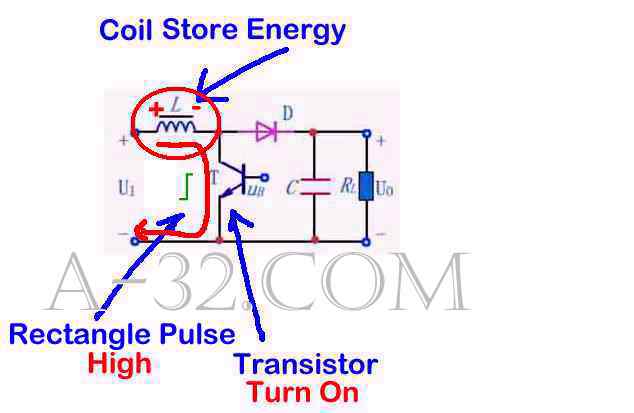 2) As the pulse goes LOW, transistor turns OFF. This sudden drop of current causes coil L to produce a back e.m.f. in the opposite polarity. This results in two voltages, the input voltage U1 and the back e.m.f.(V=VL) across L in series. Since the transistor is off, this combined voltage (U1 +VL) is no way out except that it goes thru the forward bias D and charges capacitor C. 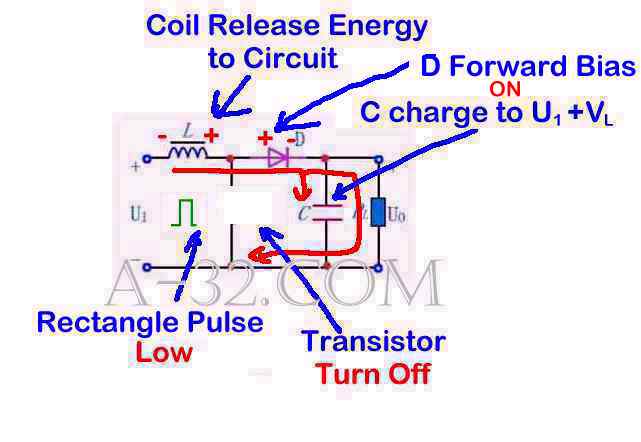 3) As the pulse goes HIGH again, transistor turns ON and L stores energy accordingly. Due to the charge on C, the cathode of D is more postive than its anode. Diode is reverse bias and then turns off. C releases a voltage of U1+VL to output (U0). 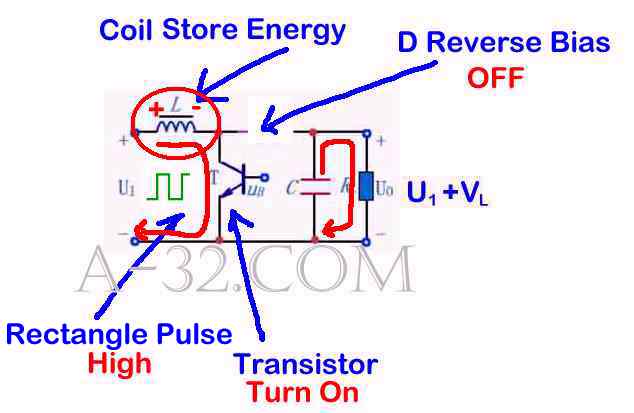 4) The output voltage (U0) is determined by the input voltage (U1) and the duty cycle (D) which is ratio between pulse HIGH (TON) and period in a rectangle pulse. For the voltage on a coil is V=L(di/dt) or di/dt=V/L. Integrate both side we have the current i=(V/L)xT where V/L is a constant for a rectangle pulse. While the transistor is ON, current at node A is ramp up, i=(U1/L)xTON. While the transistor is OFF, current at node A is ramp down i=-(U0-U1)/LxTOFF. In a steady state, total current at this node is zero, ie (U1/L)xTON + -(U0-U1)/LxTOFF = 0, simplify we have U0=U1(1+D/(1-D)), where D=duty cycle=TON/(TON+TOFF)=TON/Period For example: if duty cycle is half, ie pulse HIGH and pulse Low are equal, then output voltage will be double. U0 = 9V x (1+ 0.5/0.5) = 9V x (1+1) = 18V 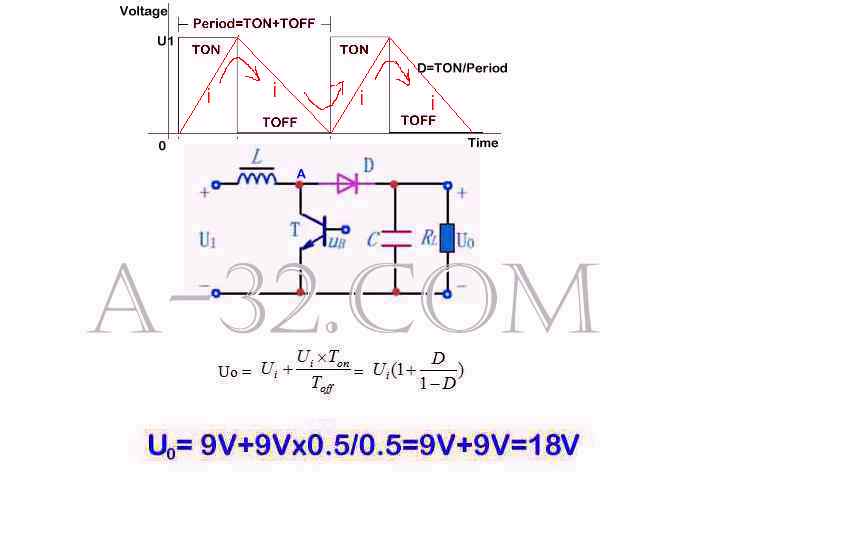 Source of all circuit diagram are from Apple's schematic. iPad, iPhone, iPod, Macbook are trademarks of Apple company. |